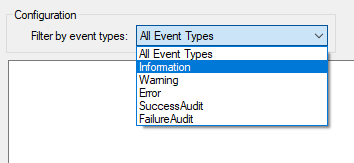Cinegy File Service
Reading time ~4 minutes
Cinegy File Service monitors Cinegy Archive databases and performs helper file based operations (retrieving files from HSM tape archives, controling the network shares free space, etc). It can monitor any number of Cinegy Archive databases located on same or different SQL Servers. Cinegy File Service can be installed on an SQL Server machine, or on a separate one (for example, you can use the server where all the gateways are running).
Cinegy File Service configuration is managed on the media storage panel launched via the "Cinegy File Service" command from the "Media storage" submenu of the database context menu:
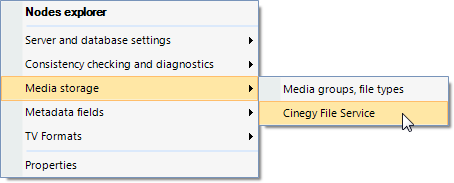
Service
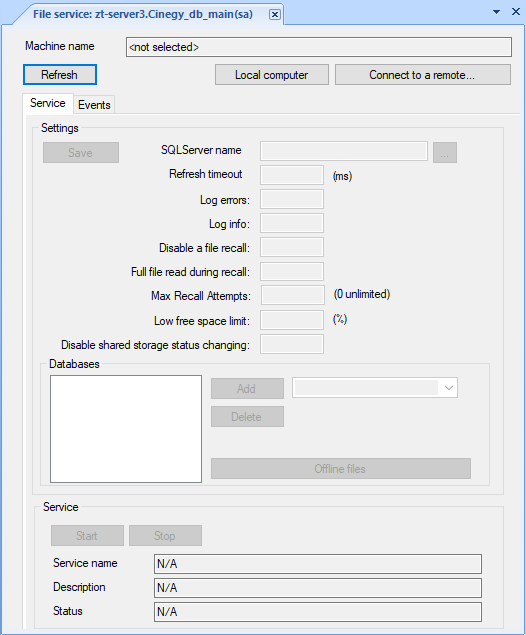
Connecting to File Service
If the service is running on the same machine, press the "Local computer" button.

Otherwise, browse for the machine where the service is running. Press the "Connect to a remote…" button. The following dialog box appears:
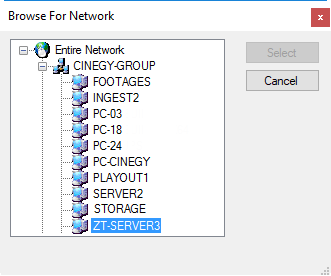
Select the machine from the list and press the "Select" button.
If the connection is successful, the "Status" will be displayed as "Running" highlighted in green.

|
Caution
|
You have to connect to the service every time you invoke the dialog. |
Setting the Refresh Interval
Enter the refresh time in milliseconds into the "Refresh timeout" field.
The value depends on the size of your disks. Do not set the value smaller than 10000 milliseconds (10 sec), as this will create unnecessary overhead.
Log Errors
Cinegy File Service can log information messages to Windows Events log. When "Log errors" is set to "1" any error detected by Cinegy File Service will be added to such log. To disable error messages logging set this parameter to "0".
Log Info
Cinegy File Service can log information messages to Windows Events log. When "Log info" is set to "1" information messages produced by Cinegy File Service will be added to such log. To disable information messages logging set this parameter to "0".
Disable a File Recall
If you are using the archive storage system and would like to enable retrieving files moved by archive system, set the "Disable a file recall" option to "0".
The "Disable a file recall" option should be set to "1" to disable the archive storage system support via Cinegy File Service.
Full File Read During Recall
By default, Cinegy File Service reads only the file header to force the 3rd party file archive systems restoring a file from the archive. Some tape- or non-tape based archive libraries support the partial file restoring based on byte offset to accelerate the media files management. In such case, the subsequent operations with media file can cause recurring data restoring from tape resulting in delays and freezes. To prevent a similar situation from occurring, the archive storage system should be configured to fully restore a file on any read attempt. Alternatively, Cinegy File Service should be configured to read the entire file.
To enable full file restore functionality, set the "Full file read during recall" option to "1" and you will retrieve the entire media file for reading.
Max Recall Attempts
Limits the number of attempts to recover a file in case it is missed or corrupted.
|
Note
|
A value of "0" indicates that the number of the file recovery attempts is unlimited. |
Low Free Space Limit
Enter the "Low free space limit" value in percent to indicate the needed limit for the locations to become non-active to avoid disk fragmentation.
|
Note
|
The default and recommended value for free space limit is "20%". When this limit is exceeded, the location will be deactivated. After the cleanup, the share will automatically be enabled. |
Disable Shared Storage Status Changing
Set the "Disable shared storage status changing" option to "0" to enable the above mentioned automatic deactivation of a certain location via the Cinegy File Service. Set the "Disable shared storage status changing" option to "1" to disable the automatic free space control.
Adding Existing Database for Watching
To add a new database, follow the following steps:
-
Press the "Browse" button next to the "SQL Server name" field to select a server.

-
Select the database name in the drop-down list next to the "Add" button.

-
Press the "Add" button.
-
Press the "Save" button:

-
"Stop" and "Start" the service to refresh its settings.
Deleting a Database from the Watch List
To remove a database from the list of monitored databases, follow the steps below:
-
Select a database in the "Databases" list box.
-
Press the "Delete" button.
Offline Files
The "Offline files" button shows the list of files on HSM System requested to be restored (if any).
Events
Go to the "Events" tab to view all the system or application events related to the service. The tab is designed for user convenience because the events are usually shown only in Windows Event Viewer.
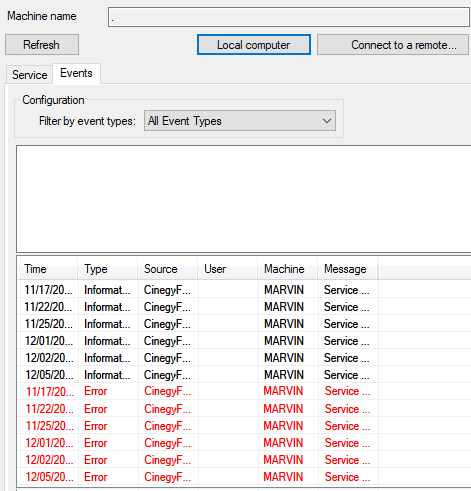
Here filter the event types to be displayed by choosing the desired option from the corresponding drop-down list:
